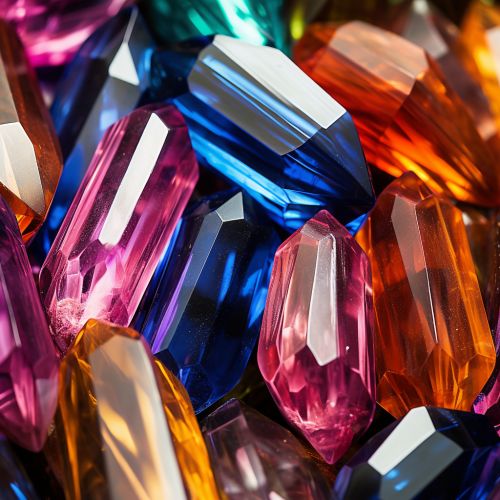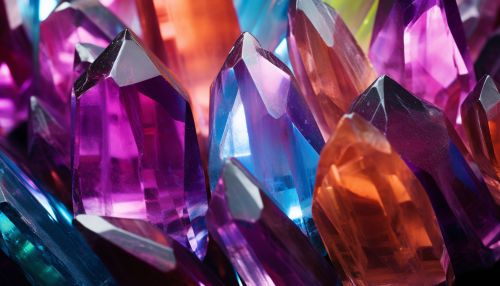Color Centers
Introduction
A color center, also known as an F-center or Farbe center (Farbe is German for color), is a type of crystallographic defect in an ionic crystal lattice. The term "color center" is derived from the fact that these defects often result in the absorption of light in the visible spectrum, giving the crystal a noticeable color.


Formation of Color Centers
Color centers are formed when an atom is missing from a lattice site and the vacancy is filled by an electron. This can occur during the crystal growth process or as a result of radiation damage. The electron trapped in the vacancy, known as an F-electron, is responsible for the optical properties of the color center.
The formation of color centers involves a complex interplay of atomic and electronic processes. It begins with the creation of a vacancy, which can occur through a variety of mechanisms such as ion bombardment, high-energy radiation, or thermal agitation. Once a vacancy is created, an electron from a neighboring atom can move into the vacant site, creating a color center.
Types of Color Centers
There are several types of color centers, each with its own unique properties and effects on the crystal's optical characteristics. The most common types include:
F-Centers
F-centers, or Farbe centers, are the most common type of color center. They are formed when an anion vacancy in a crystal lattice is occupied by an electron. The trapped electron absorbs light of a specific wavelength, giving the crystal a characteristic color. F-centers are common in alkali halide crystals, such as sodium chloride (NaCl) and potassium chloride (KCl).
V-Centers
V-centers, or vacancy centers, are formed when two neighboring lattice sites are vacant. These vacancies can trap two electrons, which can absorb or emit light when they transition between different energy levels. V-centers are often found in crystals that have been exposed to high levels of radiation.
M-Centers
M-centers, or metal centers, are formed when a metal ion is substituted for a regular ion in the crystal lattice. The metal ion introduces new energy levels into the crystal, which can absorb light and give the crystal a distinct color.
Properties of Color Centers
Color centers have a significant impact on the optical properties of a crystal. They can absorb light in the visible spectrum, giving the crystal a distinct color. The specific color depends on the type of color center and the energy levels of the trapped electrons.
In addition to color, color centers can also affect other optical properties of the crystal, such as its absorption spectrum, refractive index, and luminescence. For example, crystals with F-centers often exhibit strong luminescence, which is the emission of light when the trapped electron returns to its ground state.
Applications of Color Centers
Color centers have a wide range of applications in various fields, including:
Optoelectronics
In optoelectronics, color centers are used to create light-emitting devices and optical memory devices. The ability of color centers to absorb and emit light makes them ideal for these applications.
Laser Technology
Color centers are used in the production of lasers. The energy levels of the trapped electrons in color centers can be manipulated to produce laser light. This is the basis for color center lasers, which are used in a variety of applications, including telecommunications and medicine.
Radiation Detection
Color centers can be used to detect and measure radiation. When a crystal with color centers is exposed to radiation, the number of color centers can increase, changing the color of the crystal. This change can be measured and used to determine the amount of radiation the crystal has been exposed to.
